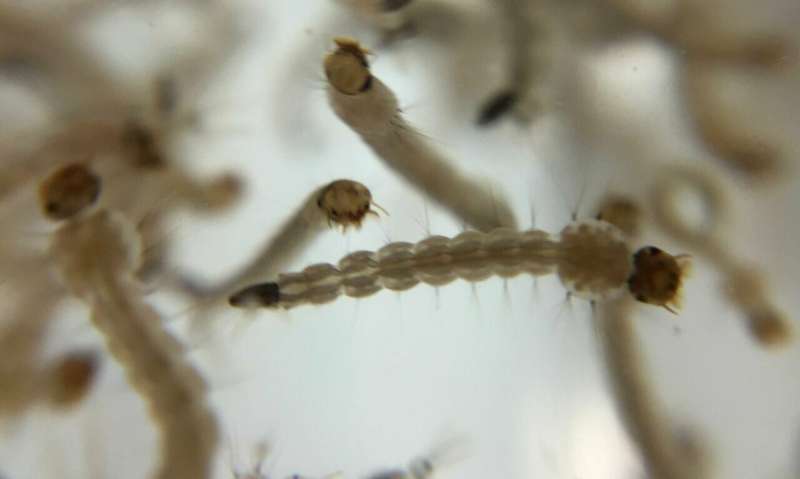
The yellow fever mosquito was only native to Africa before it was accidentally introduced to the New World. It has become an Invasive species in North America, but researchers at The Ohio State University may have found a way to squash the population in its juvenile stages.
A new paper published in the journal Insects describes how mosquitoes have evolved a natural resistance to some chemical pesticides and an alternative called carbon black, a type of carbon-based nanoparticles.
Peter Piermarini is an associate professor of entomology at Ohio State. A modified version of carbon black called Emperor 1800 was used in the study. He said that CNPs are considered to be new tools to control pests.
Piermarini said that if we can learn more about how carbon black works and how to use it safely, we could design a commercially available nanoparticle that is highly effective against insecticide resistant mosquitoes.
The Aedes aegypti mosquito, also known as the yellow fever mosquito, is a species of mosquito that is known for spreading diseases like yellow fever and the Zika virus. Adults rarely fly more than a few hundred meters from where they emerge, but their abundance leads to steady transmission of diseases that claim tens of thousands of lives every year and hospitalize hundreds of thousands more people.
The mosquito is considered to be one of the most dangerous animals on the planet. The goal of the study was to figure out how toxic the nanomaterials could be to mosquitoes.
Contrary to popular belief, not all mosquitoes want to turn our blood into food. Female mosquitoes will consume both blood and flower nectar in order to provide their eggs with enough nutrition to grow.
When female mosquitoes are ready to lay their eggs, they return to standing pools of water, like lakes or birdbaths. After they hatch, they will stay in the water for about a week.
To test Emperor 1800's effectiveness in stopping the process, researchers worked with two different strains of the yellow fever mosquito inside the lab, one extremely susceptible to typical chemical insecticides, and the other extremely resistant to them.
They were able to determine that CNPs kill mosquitos both quickly and efficiently by applying the carbon black to the water during the earliest stages of the mosquito's life cycle.
The properties of carbon black make it the most likely to kill larvae because it can be suspended in water. The material seemed to accumulate on the mosquito's head, abdomen, and even in its gut, meaning that at some point, the mosquitoes were consuming smaller particles of carbon black.
Our hypothesis is that the materials may be obstructing their ability to perform basic biological functions. Piermarini said it could be blocking their digestion or interfering with their ability to breathe.
Piermarini was surprised by one thing.
The longer carbon black was suspended in water, the more toxic it became to the insects.
Piermarini said that when you first apply the CNP solution it has similar toxicity against both strains.
The study concluded that the new nanomaterials could be very beneficial in controlling the mosquito population when applied as a preventive treatment.
Before carbon black can be used by the public, it needs to undergo rigorous testing to make sure it won't harm humans and the environment.
The co-authors were a visiting scholar in the Ohio State Entomology graduate program, a previous graduate student in the Ohio State Translational Plant Sciences graduate program, and a previous researcher in entomology.
More information: Erick J. Martínez Rodríguez et al, Larvicidal Activity of Carbon Black against the Yellow Fever Mosquito Aedes aegypti, Insects (2022). DOI: 10.3390/insects13030307 Citation: Nanoparticles prove effective against the yellow fever mosquito (2022, April 18) retrieved 18 April 2022 from https://phys.org/news/2022-04-nanoparticles-effective-yellow-fever-mosquito.html This document is subject to copyright. Apart from any fair dealing for the purpose of private study or research, no part may be reproduced without the written permission. The content is provided for information purposes only.